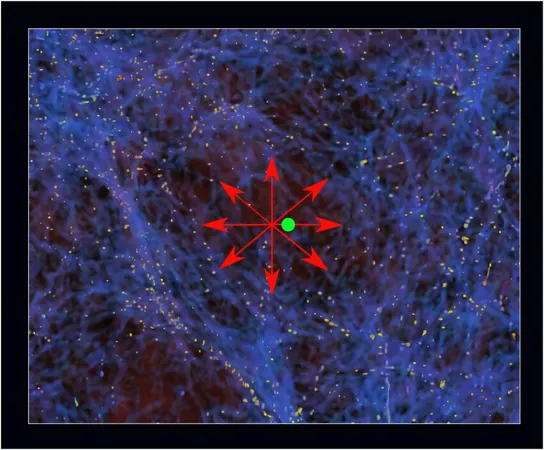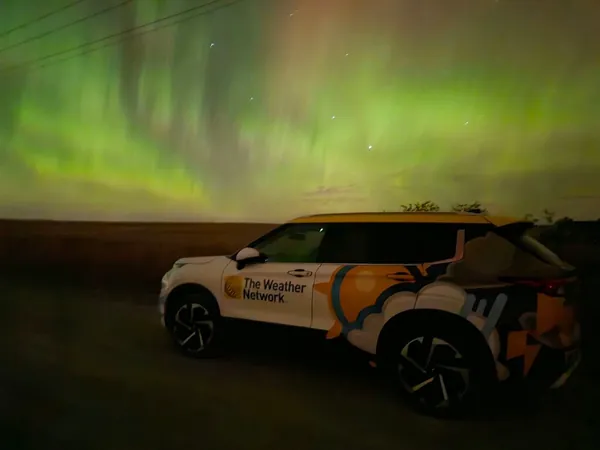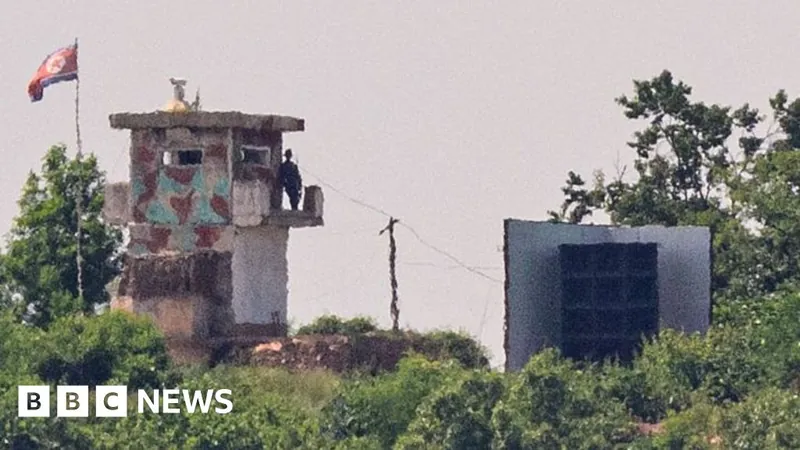
Is Earth Nestled in a Hidden Cosmic Void? Groundbreaking Research Could Solve Hubble Tension!
2025-07-07
Author: William
Shocking Discovery: A Giant Void in Space?
Astronomers are buzzing with excitement over a radical new theory suggesting that Earth and our entire Milky Way galaxy could be situated inside a colossal cosmic void. This mysterious hollow may explain why the universe appears to be expanding at a faster rate here than in other regions, a phenomenon that has baffled scientists for years.
The Hubble Tension Explained!
This groundbreaking theory could potentially resolve the infamous "Hubble tension"—the discrepancy between the predicted and observed rates of the universe's expansion. Current estimates place the universe's age at approximately 13.8 billion years. But what causes this inconsistency in expansion rates? Let's dive deeper!
The 'Sound of the Big Bang' Unveils Clues!
Recent research presented at the Royal Astronomical Society's National Astronomy Meeting (NAM 2025) at Durham University unveiled fascinating evidence. Scientists cited sound waves from the early universe, known as baryon acoustic oscillations—or essentially, the 'sound of the Big Bang'—as pivotal support for this tantalizing void theory.
Hubble's Legacy and the Expansion Measurement Dilemma
First proposed by Edwin Hubble in 1929, the Hubble constant measures the universe's expansion rate by analyzing the distance and speed of moving celestial objects. Yet, there's a hitch: using the standard cosmological model to project early universe data into the present day predicts a slower expansion rate than what recent observations suggest. This contradiction is the heart of the Hubble tension.
Local Void Theory: A Game Changer?
Dr. Indranil Banik from the University of Portsmouth proposes that a significant solution to this discrepancy could be our galaxy's proximity to the center of a vast, local void. This gravitational pull toward denser outer regions could explain why our local expansion rate appears faster.
The Size and Scale of the Cosmic Void
For this theory to hold water, researchers believe that Earth and our solar system would occupy a spot near the center of a void extending about a billion light-years across, with a density approximately 20% lower than the universe’s average. Interestingly, counting galaxies shows that our local cosmos indeed has a lower number density compared to adjacent regions, lending credence to the theory.
Controversy Looms: Can the Standard Model Stand?
However, the idea of such a massive void challenges the standard cosmological model, which anticipates a more uniform distribution of matter across vast distances. Critics argue that this could complicate the acceptance of local void theories.
Echoes of the Big Bang: A Cosmic Ruler!
Dr. Banik's latest data indicates that the baryon acoustic oscillations support the existence of this void. These ancient sound waves traveled briefly before the universe cooled and 'froze' them in place, acting as a cosmic ruler to help map the history of cosmic expansion.
Next Steps: Unlocking the Universe's Age!
The researchers will further scrutinize their local void model against other methods, such as cosmic chronometers. By studying older galaxies—no longer forming new stars—scientists will analyze their stellar composition, revealing their age and how it corresponds with cosmic expansion. This comprehensive approach aims to illuminate our understanding of the universe's expansion history.
Stay Tuned for More Cosmic Revelations!
As astronomers continue to explore the mysteries of our universe, the theory of Earth residing within a vast cosmic void could reshape our understanding of cosmic expansion and ultimately, the very fabric of time itself! Keep your eyes on the stars!









 Brasil (PT)
Brasil (PT)
 Canada (EN)
Canada (EN)
 Chile (ES)
Chile (ES)
 Česko (CS)
Česko (CS)
 대한민국 (KO)
대한민국 (KO)
 España (ES)
España (ES)
 France (FR)
France (FR)
 Hong Kong (EN)
Hong Kong (EN)
 Italia (IT)
Italia (IT)
 日本 (JA)
日本 (JA)
 Magyarország (HU)
Magyarország (HU)
 Norge (NO)
Norge (NO)
 Polska (PL)
Polska (PL)
 Schweiz (DE)
Schweiz (DE)
 Singapore (EN)
Singapore (EN)
 Sverige (SV)
Sverige (SV)
 Suomi (FI)
Suomi (FI)
 Türkiye (TR)
Türkiye (TR)
 الإمارات العربية المتحدة (AR)
الإمارات العربية المتحدة (AR)